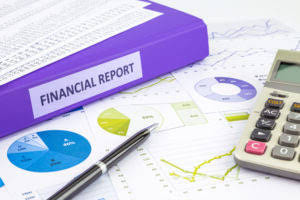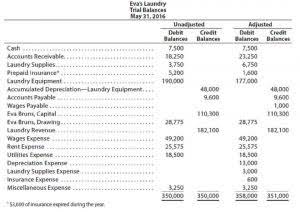All such information is provided solely for convenience purposes only and all users thereof should be guided accordingly. Finance Strategists has an advertising relationship with some of the companies included on this website. We may earn a commission when you click on a link or make a purchase through the links on our site.
How to Calculate Shares Outstanding (Step-by-Step)

Using the SUMPRODUCT function, we’ll calculate the weighted average shares outstanding over fiscal year 2021, which comes out to 448,265. Companies with big news that affects their number of shares outstanding, such as stock splits, announce the events in press releases that are reported by the business media. But the company, as in our example above and using the treasury stock method, has 5 million shares linked to options and warrants. Let’s assume the company also has $500 million in convertible debt with a conversion price of $5. Outstanding shares refer to the authorized shares that have been issued to a company’s shareholders, excluding the treasury stock retained by the company itself. Recognizing that a company’s number of shares outstanding can change is also useful.
Use by Investors and Analysts
It also has 10 million stock options outstanding with an exercise price of $5. For many companies, however, even those executing buybacks, the number of outstanding shares and the number of issued shares is the same. Those companies buy back and retire shares, instead of holding them in the treasury. In this way, the number of both issued and outstanding shares is reduced.

How are weighted average shares outstanding different than basic shares outstanding?
To edit a transaction, click its numbered Edit button to load the transaction into the form. Bank of America (BAC), for example, is in the financial services sector. Investors can compare the EPS of Bank of America with other how to calculate outstanding shares of common stock financial institutions, such as JP Morgan Chase (JPM) or Wells Fargo (WFC), to get an idea of relative financial strength. On the other hand, if the actual EPS beats its estimates, the stock may experience a rally.
One method is for the investor to calculate a weighted average of the share price paid for the shares. The investor would multiply the number of shares acquired at each price by that price and then add those values together. Lastly, divide the total value by the total number of shares purchased to arrive at the weighted average share price. The number of shares outstanding in a company will often change due to a company issuing new shares, repurchasing shares, and retiring existing shares. The number of outstanding shares can also change if other financial instruments are turned into shares. An example of this is when employees of the company convert their employee stock options (ESO) into shares.
- The weighted average shares outstanding figure smooths out this variance, by simply averaging the share count across the reporting period.
- Outstanding shares of stock is the kind of stock issued by the company that is owned by investors, rather than by corporations themselves.
- The company now has 5,000 authorized shares, 2,000 issued, 500 in treasury stock, and 1,500 outstanding.
- The “Ending Shares Outstanding” represents the common share count on the first date of the quarter.
- The earnings per share calculation for the year would then be calculated as earnings divided by the weighted average number of shares ($200,000/150,000), which is equal to $1.33 per share.
Importance of a Weighted Average of Outstanding Shares
Earnings per share is a measure of a company’s valuation, calculated by dividing its profit by the number of shares outstanding. A company’s market capitalization is the current market value of all of its outstanding shares. The reason for that is that most public companies have instruments that provide for shares to be issued in the future. These instruments include stock options, stock warrants, and convertible debt. The number of outstanding shares influences market capitalization, a critical metric for valuing companies.
Do you own a business?
Then, add those terms together to get the weighted average number of outstanding shares. If the company has not bought back shares from investors and does not have treasury shares, this line item won’t show up on the balance sheet. Once you’ve located the number of treasury stocks, write it down for your calculations. The balance sheet is a financial statement issued by the company that provides a full accounting of the company’s assets, liabilities, and shareholder’s equity at a particular moment in time.

These may later appear in the form of a secondary offering, through converting convertible securities, or issued as part of employee compensation such as stock options. Due to these factors, the actual number of shares outstanding can vary over the course of a reporting period. The term outstanding shares refers to a company’s stock currently held by all its shareholders. Outstanding shares include share blocks held by institutional investors and restricted shares owned by the company’s officers and insiders. A company’s number of outstanding shares is not static and may fluctuate wildly over time. A company’s outstanding shares, the total shares held by shareholders excluding treasury stock, can fluctuate due to various factors.
